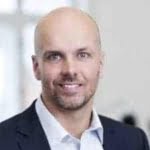![[shutterstock:139983946, ESB Professional]](https://e3mag.com/wp-content/uploads/2013/06/shutterstock_139983946.jpg)

With growth of 23 percent (adjusted for exchange rate effects as much as 25 percent) in the Software- and Cloud-subscription revenue has SAP clearly exceeded the targets it had set itself of 14-20 percent in the first quarter of 2013.
In the process, the CloudWith sales of 167 million euros, compared to 35 million euros in the prior-year quarter, the second business unit accounted for the largest share of growth.
Even if not all of the Cloud-While the growth was organic, as Ariba sales were not included in last year's figures and SuccessFactors sales were only half included, this business area has become a significant growth driver.
The Hana-Sales were also strong. Thus SAP in January first Customers with the Business Suite on Hana present. The performance was heterogeneous from a regional perspective.
In the Americas region, sales grew Software and Cloud-Subscription revenues increased by 49 percent (51 percent adjusted for foreign exchange). In EMEA, growth was still 13 percent (15 percent adjusted for foreign exchange), while sales in Asia/Pacific/Japan (APJ) declined by seven percent adjusted for foreign exchange.
SAP-Performance in EMEA
SAP had a good first quarter in EMEA with nine percent growth (adjusted for exchange rate effects) in license, maintenance and Cloud-subscription revenue. Part of the growth came directly from the acquisitions of Ariba and SuccessFactors.
The almost exclusively organic growth in license revenues of nine percent is also very satisfactory, particularly in view of the economic environment in Europe. The performance of the countries and subregions within EMEA followed the trend of 2012.
The so-called emerging markets of Russia, the Middle East and Africa continue to grow very rapidly, with over 20 percent in license business. Northern Europe grew more strongly than Southern Europe, mainly as a result of strong business in the UK, Sweden and the Switzerland is attributable to the SAP's performance in Germany can be described as solid.
As expected, sales in Southern Europe were somewhat weaker, but here, too, a low single-digit license growth achieved a trend reversal compared to previous quarters.
The SAP–Management assumes that the software business in Southern Europe has bottomed out and expects the market to recover slowly.
From an industry perspective SAP achieve a good performance in the financial services (banking and insurance) and retail sectors. Both sectors are showing themselves to be in line with the new SAP-The company is open to SAP's Hana and Mobility solutions. UK-based home improvement retailer Kingfisher, with more than 78,000 employees, is a good example of SAP's momentum in retail.
The company has a corporate license for Hana purchased and will all SAP-solutions there migrate. Kingfisher's goal is to improve the customer experience through faster self-service.Applications with improved functionality and accelerate supply chain collaboration.
The SAP-Sales in the consumer goods and service industries were comparatively weaker.
From a product perspective, Hana and Mobility were the growth drivers in EMEA, and the same applies to the rest of the world. While solutions for business units such as HCM, CRM and SCM generated good sales, demand for classic ERP-suites weaker.
Hana already contributes a significant portion of European license sales, with demand coming from a variety of sectors. Nevertheless, the SAP–Management the greatest potential for Hana as a platform for coreERP-systems, analytical solutions, and B-to-CApplications from SAP or partner companies.
Besides Kingfisher can Bosch–Siemens-Home Appliances (BSH) with more than 46,000 employees as an example of strategic Hana-projects can be considered. BSH migrates the entire Business Suite installation on SAP's in-memoryTechnology.
From a channel perspective SAP indirect sales via the OEM-Strengthen the channel. In the past, SAP's OEM-business is primarily limited to BusinessObjects solutions such as Crystal Reports.
In the meantime, the focus SAP due to the increasingly important middleware and infrastructureSoftware-products to new OEM-partners especially in Data Management and Mobile Infrastructure. These OEMs can serve both ISVs and existing SAP–Customers be like Ericsson.
The company sells Sybase-products as part of its own solutions. In order to further develop this channel SAP an EMEA OEM Account Management Team launched.
Conclusion
SAP's performance in the first quarter of 2013 showed clear differences between the new and the classic SAP-business. The pure Software-sales (excluding Cloud), which has been the traditional SAP-business grew by only five percent after adjusting for exchange rate effects, whereas the Cloudbusiness achieved triple-digit growth rates.
Also the mobile and the Hana-business were strong. The development of SAP in the first quarter of 2013 corresponds to the IDC-forecasts for 2013, according to which between 2013 and 2020 90 percent of the IT-market growth from the "3rd Platform" products.Technologies will come from, compared to 22 percent last year.
According to IDC-In SAP's opinion, the biggest challenge will be to renew the core application business as the most important source of revenue on the "3rd Platform". For this reason, the topics of Business Suite on Hana and coreApplications in the Cloud so important to be able to generate long-term growth.
Henry Morris is senior vice president at IDC and on a global level responsible for Software- and IT-Services-Research as well as for the IDC Sales and Marketing Advisory Groups. He also leads the global IDC Big Data Research Initiative.
Bo Lykkegaard is Research Director at IDC and responsible for the European enterprise applications market, in particular for the areas of ERP-, CRM-, HR and PayrollApplications.




